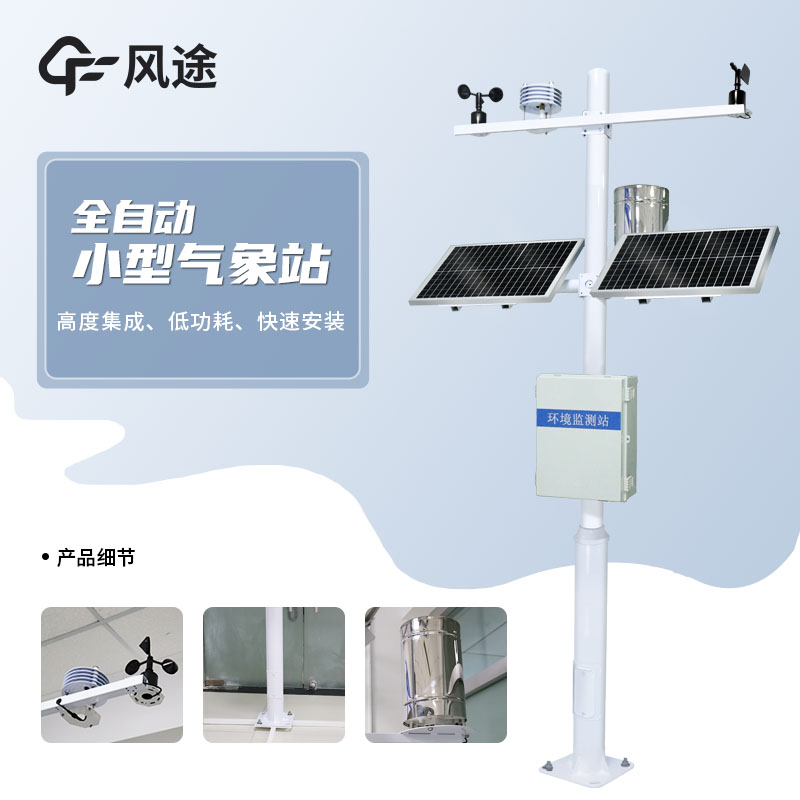Mechanical weather station is a device that provides real-time meteorological data for a specific area. Due to its small size, low cost, and convenient installation, it has extensive practicability among the people.
(I) Structural analysis
The hardware mainly consists of sensors, data collectors, communication modules, power supply systems, and installation brackets. The software mainly includes cloud platforms, WEB terminals, and Android APPs.
Multiple sensors can be selected, such as temperature and humidity sensors, wind speed and direction sensors, barometric pressure sensors, (radar/optical/tipping bucket/piezoelectric) rainfall sensors, carbon dioxide sensors, radiation sensors, and so on.
The data collector is a device for collecting and transmitting data, and the collection interval can be set.
There are many communication modules, such as serial communication, Ethernet communication, and wireless communication (such as GPRS, satellite communication, etc.). The specific choice depends on the communication conditions and needs of the installation location.
The power supply mode can be mains power supply, solar power supply, or battery power supply, etc., which is convenient for long-term operation in the wild.
(II) Recommended manufacturer
Shandong Fengtu Internet of Things Technology Co., Ltd. The company was established in 2017 and is headquartered in the High-tech Zone of Weifang City, Shandong Province. It is committed to the research and development, production, sales, and service of various types of weather stations. It has a complete production chain, a strong technical team, and a comprehensive marketing team. Its regional weather station products have passed metrological certification, and the company has also passed iso9001-2008 international quality system certification and high-tech enterprise certification. The quality is guaranteed. Welcome to cooperate.
(III) How to choose a Mechanical weather station that suits your needs?
A. Clearly define monitoring needs and determine technical parameters such as monitoring elements, precision requirements, monitoring range, data storage and transmission methods;
B. Consider equipment performance, such as protection level, whether it is lightning-proof, dust-proof, and waterproof. You can check the manufacturer's product quality certification, user evaluations and other information;
C. Comprehensively consider the cost budget and choose a weather station with an appropriate price according to the budget. The prices of weather stations of different manufacturers and models vary greatly. It is recommended to ask for more quotes before purchasing.

Article address:https://www.sqqx.net/en/news/26.html

 +86 15898932201
+86 15898932201



